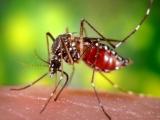Aedes aegypti mosquitoes that carry Zika can also transmit dengue and chikungunya in the same bite, according to a new study that suggests coinfections in outbreak areas may be more common than thought, opening up new questions about clinical consequences and the involvement of other viruses.
In other research developments, Chinese researchers reported a mutation in the Asian-lineage Zika strain that made it more infectious to mosquitoes, which could have fueled transmission during recent epidemics in the Americas. Also, another team reported that Aedes albopictus, another species that can transmit Zika and other diseases, has become established and are spreading in Connecticut, which had been considered the northern part of it range.
The new findings in mosquitos come as the US Centers for Disease Control and Prevention (CDC) reported 6 more babies born in the United States with Zika-related birth defects, raising the total to 64. The number of pregnancy losses related to the virus remained at eight.
Clinical impact of mosquitoes with 3 viruses unclear
Regarding the triple-threat viral payload that Ae aegypti mosquitoes can carry in their midgut, researchers from Colorado State University (CSU) published their findings today in Nature Communications. Last November, they reported their initial findings that the mosquitoes can transmit Zika and chikungunya in the same bite at the annual meeting of the American Society of Tropical Medicine in Hygiene.
In their latest lab experiments, they found that mosquitoes can transmit all three viruses simultaneously, but they said passing all three is probably extremely rare in natural settings.
Claudia Ruckert, PhD, MSc, postdoctoral fellow in CSU's arthropod-borne and infectious diseases laboratory, said in press release from the school, "Dual infections in humans, however, are fairly common, or more common than we would have thought."
The team reported that they were surprised to find that, when the viruses resided in the mosquito midgut at the same time, a dominant virus didn't emerge or outcompete the others. The viruses become established and replicate in the midgut.
Greg Ebel, ScD, also with the CSU team, said that all the viruses have mechanisms to suppress mosquito immunity, which could lead to synergy, but they all require similar resources, which could have led to competition. "We didn't see much evidence of either one of these things in mosquitoes that were infected in the lab by multiple viruses."
So far, there's no evidence that human coinfections with the viruses are more severe, but Ruckert said published findings about that have been contradictory.
Also, coinfections might be underdiagnosed, she said. "Depending on what diagnostics are used, and depending on what the clinicians think, they might not notice there's another virus," Ruckert said. "It could definitely lead to misinterpretation of disease severity."
For their next experiments, Ruckert said the group will look at how coinfection affects virus evolution within the mosquitoes and if transmissibility changes based on the number of different viruses present. They said they also hope to learn more about where viruses replicate in mosquitoes and if coinfections involving yellow fever—also carried by Ae aegypti mosquitoes—can occur.
Mutation may enhance Zika spread
Meanwhile, a research team in China looking into what might explain the apparent increased infectivity of the Asian Zika lineage in the Americas reported their mutations findings in the May 17 edition of Nature.
They examined genetic sequences from clinical isolates from the outbreak in the Americas, comparing them with those of an Asian-lineage Zika strain isolated in Cambodia in 2010.
The researchers identified an amino acid substitution in the nonstructural protein 1 (NS1) in the virus implicated in the America's outbreak, which appears to enhance infectivity in mosquitoes that acquired the virus from experimentally infected mice.
The results showed that the spontaneous mutation promoted both Zika infectivity and prevalence in the mosquitoes, which could have enhanced transmission during the recent outbreaks in the Americas.
Northern establishment of Ae albopictus
In other research developments, a team from Connecticut's Agricultural Experiment Station yesterday, writing in PLoS Neglected Tropical Diseases, reported their findings from 20 years of monitoring Aedes albopictus mosquitoes in the state.
Ae albopictus mosquitoes can spread Zika and other related diseases, but they don't live as close to humans as their Ae aegypti counterparts.
The study authors said the species was first detected in an isolated finding in Connecticut in 2006, not appearing again until 2010. Populations have increased every year since then, except for during 2014 and 2015, after especially cold winters.
Detections were most common along the state's southwestern shoreline, but the mosquitoes are sometimes found in central Connecticut. Lab tests identified two arboviruses in the mosquitoes, Cache Valley virus and West Nile virus, suggesting the species poses a disease threat to humans.
The researchers said the findings show that Ae albopictus have become established at their northern range, offering a baseline finding for monitoring, especially given expected climate changes.
See also:
May 19 Nat Comm abstract
May 19 CSU press release
May 17 Nature abstract
May 18 PLoS Negl Trop Dis abstract





















